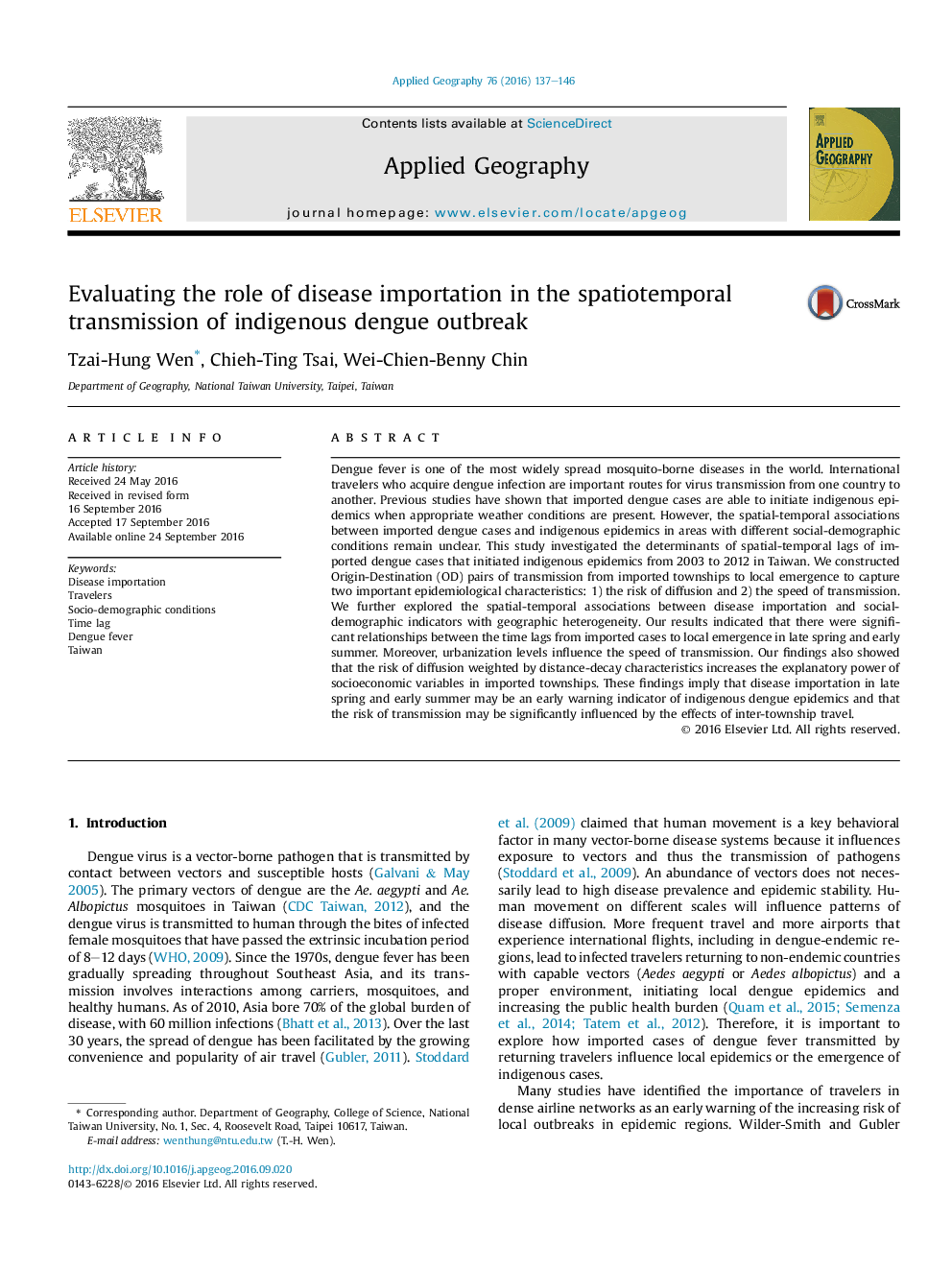| Article ID | Journal | Published Year | Pages | File Type |
|---|---|---|---|---|
| 6458544 | Applied Geography | 2016 | 10 Pages |
â¢The Origin-Destination (OD) pairs were constructed as transmission links to quantify the risk of diffusion and transmission speed.â¢The risk of diffusion to geographically neighboring townships is higher than to remote townships.â¢Urbanization levels influence the speed of dengue transmission.â¢Dengue importation in late spring and early summer may be an early warning indicator of indigenous epidemics in Taiwan.
Dengue fever is one of the most widely spread mosquito-borne diseases in the world. International travelers who acquire dengue infection are important routes for virus transmission from one country to another. Previous studies have shown that imported dengue cases are able to initiate indigenous epidemics when appropriate weather conditions are present. However, the spatial-temporal associations between imported dengue cases and indigenous epidemics in areas with different social-demographic conditions remain unclear. This study investigated the determinants of spatial-temporal lags of imported dengue cases that initiated indigenous epidemics from 2003 to 2012 in Taiwan. We constructed Origin-Destination (OD) pairs of transmission from imported townships to local emergence to capture two important epidemiological characteristics: 1) the risk of diffusion and 2) the speed of transmission. We further explored the spatial-temporal associations between disease importation and social-demographic indicators with geographic heterogeneity. Our results indicated that there were significant relationships between the time lags from imported cases to local emergence in late spring and early summer. Moreover, urbanization levels influence the speed of transmission. Our findings also showed that the risk of diffusion weighted by distance-decay characteristics increases the explanatory power of socioeconomic variables in imported townships. These findings imply that disease importation in late spring and early summer may be an early warning indicator of indigenous dengue epidemics and that the risk of transmission may be significantly influenced by the effects of inter-township travel.
